In 2015, the scientific world was stunned when researchers announced the discovery of a fossilized snake with four legs. Named Tetrapodophis amplectus (meaning “four-legged hugging snake”), this remarkable specimen was unearthed from the Crato Formation in northeastern Brazil. Estimated to be approximately 110 million years old from the Early Cretaceous period, this fossil represents one of the most significant findings in modern paleontology. The specimen measures just under 20 centimeters (8 inches) long, with tiny limbs measuring only a few millimeters in length. Despite their small size, these limbs possessed identifiable ankles and wrists, along with five digits on each foot—features that challenged existing theories about snake evolution and opened new windows into understanding the transition of reptiles from limbed ancestors to limbless modern forms.
Anatomical Features That Blur the Line

Tetrapodophis exhibits a fascinating blend of snake-like and lizard-like characteristics that makes it particularly valuable to evolutionary biologists. Its elongated body contains an impressive 160 vertebrae, far more than typical lizards but consistent with snake anatomy. The skull, though partially preserved, shows characteristics typical of early snakes, including a flexible jaw structure. However, the most striking feature remains its four fully developed limbs, each with five digits—a characteristic never before observed in snake fossils. The front limbs are smaller than the hind limbs, suggesting they might have already been in the evolutionary process of reduction. Additionally, the specimen possesses the single row of belly scales (gastrosteges) characteristic of snakes rather than the multiple scale rows found in lizards. This mosaic of features makes Tetrapodophis a crucial transitional fossil that illuminates the evolutionary pathway from lizards to snakes.
The Evolutionary Significance
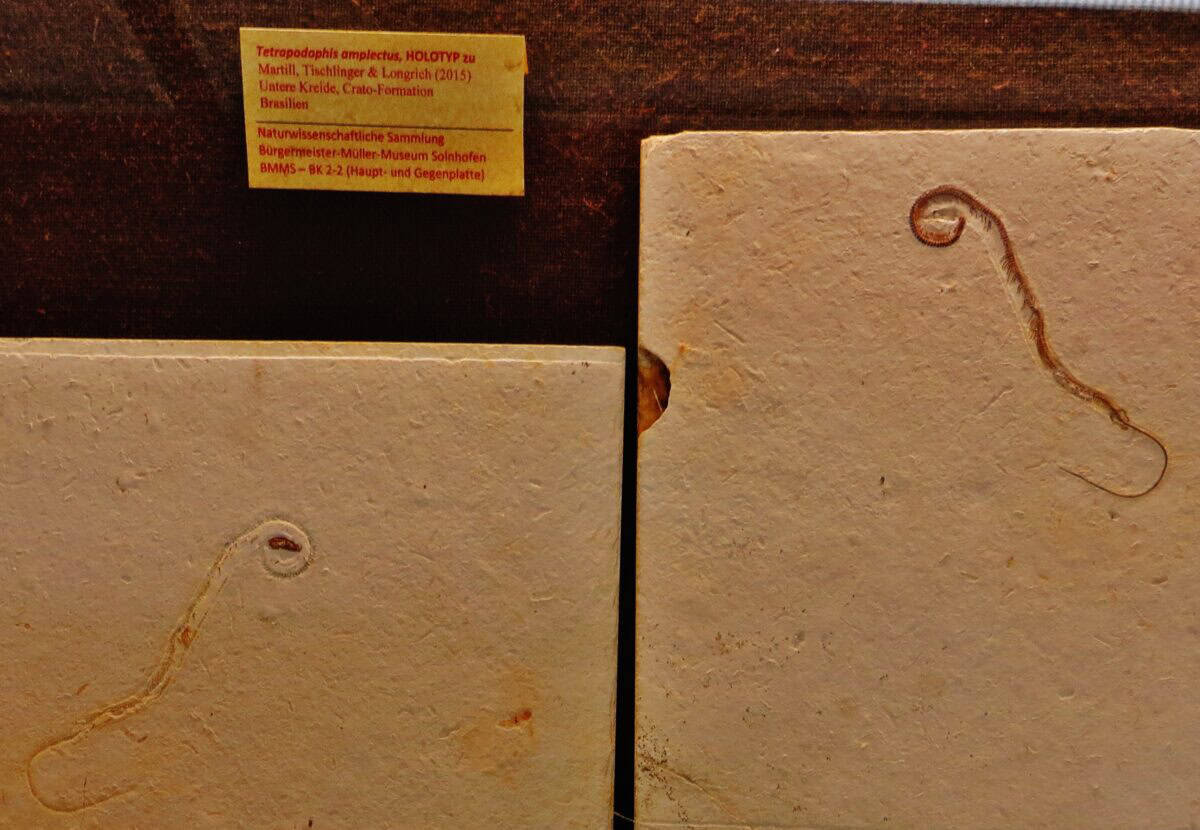
The discovery of Tetrapodophis revolutionized our understanding of snake evolution. Prior to this finding, scientists had recovered fossils of primitive snakes with remnants of hind limbs, such as Najash and Pachyrhachis, but never a four-limbed specimen. This discovery provides compelling evidence for the terrestrial origin theory of snakes, suggesting that snakes evolved from burrowing lizard ancestors rather than marine ones. The presence of four functional limbs in Tetrapodophis indicates that snake evolution passed through a four-legged phase before limbs were gradually reduced and eventually lost entirely. This transitional fossil effectively bridges the morphological gap between lizards and snakes, representing a crucial missing link in the evolutionary narrative. By demonstrating that limb loss in snakes was a gradual process rather than a sudden adaptation, Tetrapodophis has forced paleontologists to reconsider previously accepted evolutionary timelines and mechanisms.
Behavioral Insights from Limb Structure
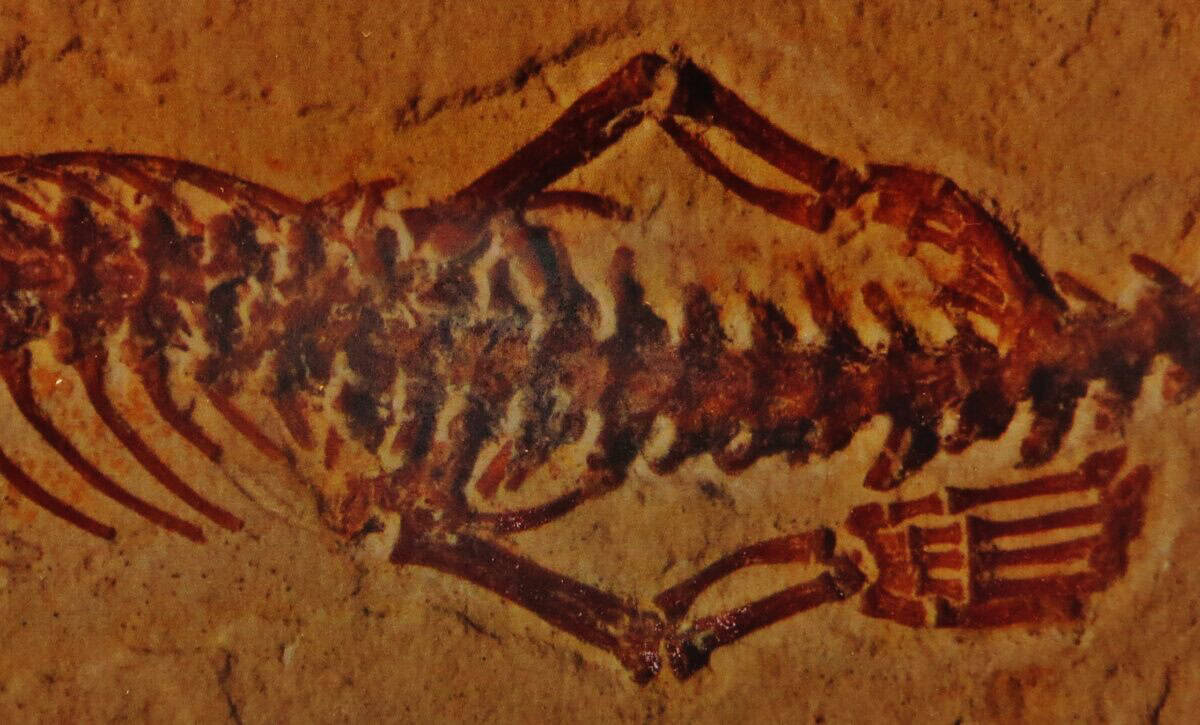
The unique limb structure of Tetrapodophis has prompted fascinating hypotheses about its behavior and ecological niche. Unlike the vestigial limbs seen in other primitive snake fossils, the limbs of Tetrapodophis appear to have been functional, albeit not for locomotion. Detailed analysis of the limb structure suggests they may have been adapted for grasping—perhaps used for holding prey or during mating. The specific morphology of the limbs, with their elongated digits and specialized joints, indicates they were specialized for a particular function rather than mere evolutionary leftovers. This hypothesis is supported by the genus name “amplectus,” meaning “embracing” or “hugging,” which was chosen to reflect this presumed behavior. If correct, this interpretation suggests that the first stages of limb reduction in snake evolution may have involved repurposing limbs for specialized functions before they were gradually lost, providing new insights into the adaptive processes driving snake evolution.
The Paleoenvironment of Tetrapodophis

The Crato Formation in Brazil, where Tetrapodophis was discovered, represents an ancient lacustrine (lake) environment dating back to the Early Cretaceous period. During this time, the region featured a network of shallow lakes within a warm, arid climate. The exceptional preservation of fossils in this formation results from the fine-grained limestone sediments and anoxic (oxygen-poor) conditions at the bottom of these ancient lakes. These conditions prevented decomposition and allowed for remarkable preservation of soft tissues in many specimens. The paleoenvironment of Tetrapodophis would have been rich in biodiversity, including various reptiles, amphibians, fish, insects, and plants. The presence of a transitional snake in this environment supports theories that snake ancestors were terrestrial burrowers rather than marine swimmers, as they evolved in a predominantly land-based ecosystem. Understanding this paleoenvironment provides crucial context for interpreting the evolutionary pressures that may have shaped the development of early snakes.
Controversy and Scientific Debate

Since its initial description, Tetrapodophis has become the center of significant scientific controversy. Some researchers have challenged the identification of the specimen as a snake, suggesting it might instead be a member of an extinct group of marine lizards called dolichosaurs, which independently evolved snake-like body forms. Another controversial aspect involves the specimen’s acquisition and current repository—the fossil was originally collected from Brazil but ended up in a private collection in Germany before being studied, raising concerns about potential violations of Brazil’s fossil protection laws. Furthermore, access to the specimen for further study has been limited, complicating efforts to resolve debates about its classification. Some paleontologists have also questioned the interpretation of specific anatomical features, suggesting alternative explanations for structures identified as limbs. These ongoing debates highlight the challenges inherent in paleontological research and the importance of continued careful analysis of rare transitional fossils.
Comparison to Other Primitive Snake Fossils
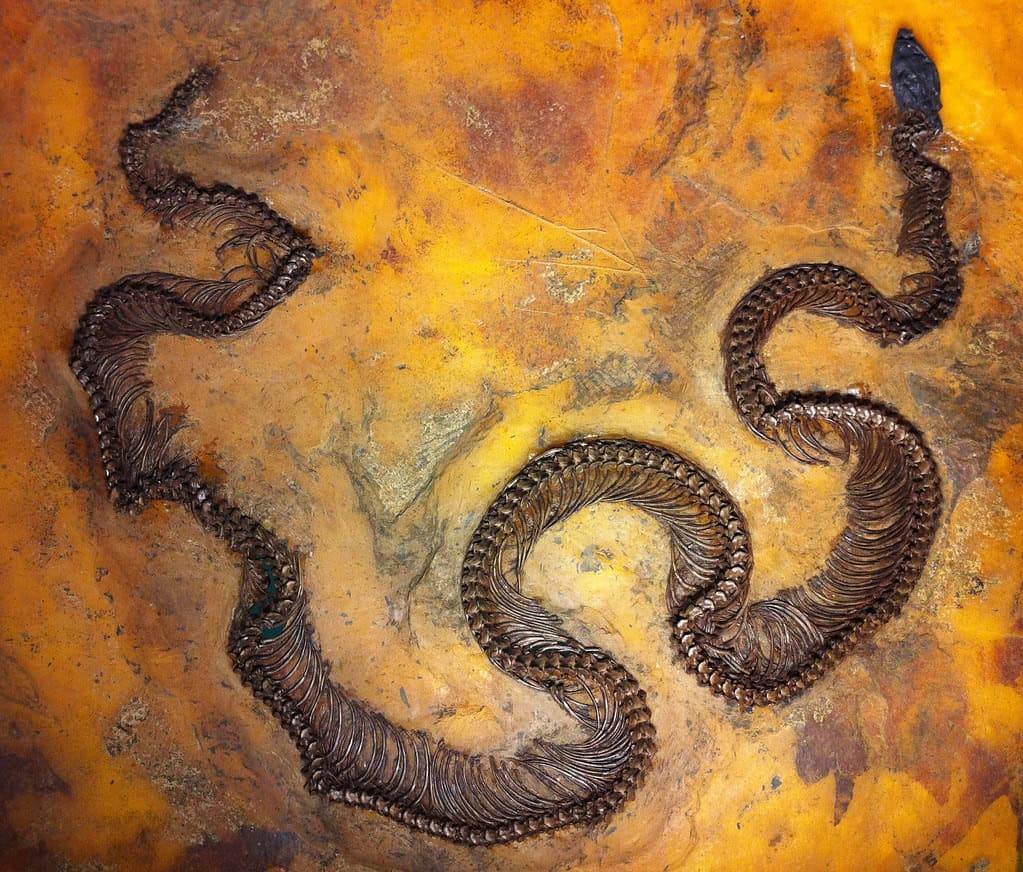
When placed in the broader context of snake evolution, Tetrapodophis represents one point on a continuum of transitional forms. Other notable primitive snake fossils include Najash rionegrina from Argentina (approximately 90 million years old), which possessed small but developed hind limbs, and Pachyrhachis problematicus from the Middle East (approximately 95 million years old), which retained vestigial hind limbs. Eophis underwoodi from the United Kingdom (167 million years old) is considered one of the oldest known snake fossils but lacks preserved limbs. Compared to these specimens, Tetrapodophis stands out for its four limbs and earlier geological age, potentially placing it closer to the lizard-snake transition. Each of these fossils contributes unique information to our understanding of snake evolution: Najash provides insights into the later stages of limb reduction, Pachyrhachis demonstrates adaptation to marine environments, and Tetrapodophis potentially reveals the earliest phase of the transition. Together, these fossils form a mosaic that helps scientists reconstruct the complex evolutionary history of snakes.
Techniques Used to Study the Fossil

The analysis of Tetrapodophis involved cutting-edge paleontological techniques that allowed researchers to extract maximum information from this remarkable specimen. High-resolution CT scanning enabled scientists to examine internal structures without damaging the fossil, revealing details of the vertebral column and skull that would otherwise remain hidden. Scanning electron microscopy provided insights into the microscopic structure of scales and bone tissue. UV light examination helped identify traces of soft tissue preservation and distinguish fossil material from the surrounding matrix. Additionally, comparative anatomical analysis with both modern and extinct reptiles helped place Tetrapodophis in its proper evolutionary context. Researchers also applied phylogenetic analysis—a statistical method for determining evolutionary relationships—to determine where this specimen fits in the reptile family tree. These sophisticated analytical approaches were essential for recognizing the significance of Tetrapodophis and continue to be applied as scientists refine their understanding of this important transitional fossil.
Implications for Understanding Modern Snakes

The discovery of Tetrapodophis provides valuable insights that enhance our understanding of modern snakes. By illuminating the evolutionary pathway through which snakes lost their limbs, this fossil helps explain anatomical peculiarities in contemporary species. For instance, the vestigial pelvic girdles and tiny leg bones still present in primitive modern snakes like boas and pythons now have a clearer evolutionary context. The fossil also supports hypotheses about the genetic mechanisms behind limb development and loss in vertebrates, suggesting that the genes responsible for limb development weren’t deleted in snake evolution but rather deactivated or repurposed. This has implications for understanding developmental biology across reptiles. Furthermore, by clarifying the terrestrial origins of snakes, Tetrapodophis helps explain many of the specialized adaptations seen in modern species, such as their unique locomotion methods, skull kinesis (movable skull bones), and specialized vertebral morphology—all adaptations that evolved from a four-limbed, burrowing ancestor rather than a marine one.
Revising the Timeline of Snake Evolution
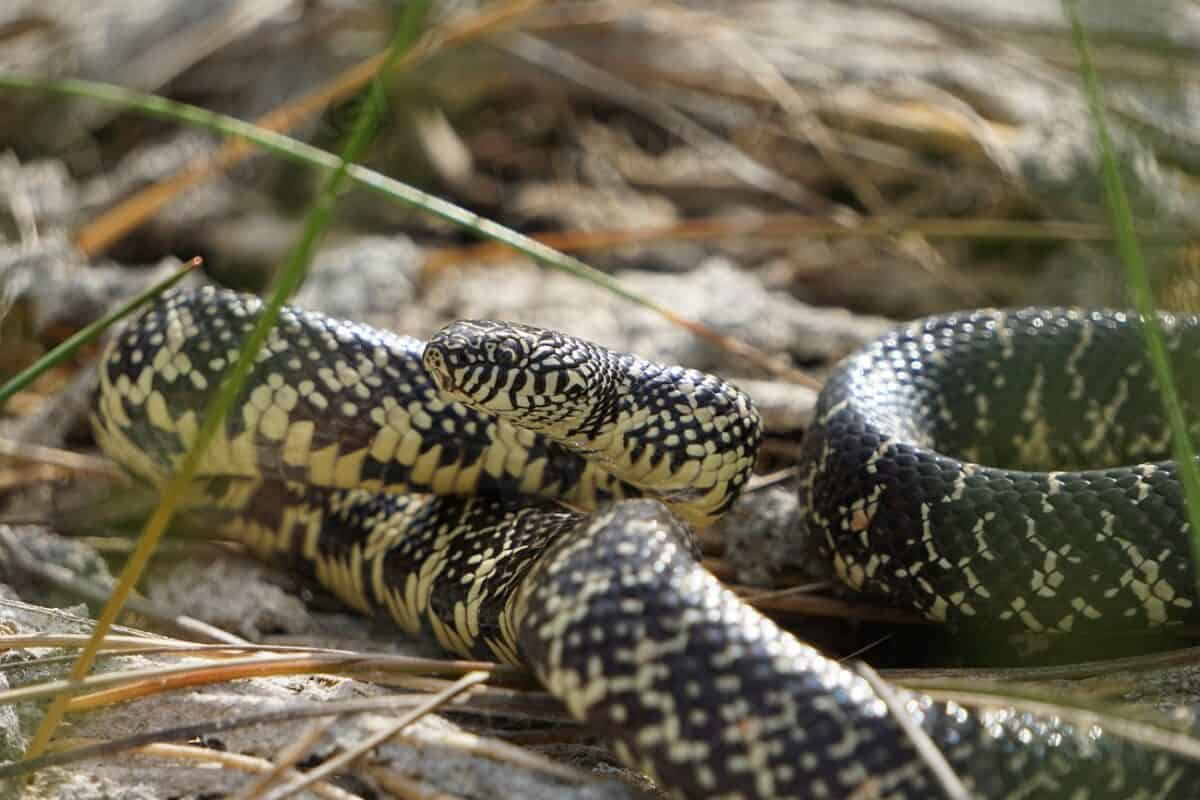
The identification of Tetrapodophis as an early snake necessitates a recalibration of the timeline for snake evolution. If this specimen is indeed a primitive snake from 110 million years ago, it pushes back the known origin of snakes by several million years. Previous estimates based on fossil evidence suggested that snakes first appeared approximately 100-120 million years ago, but most definitive snake fossils dated to less than 100 million years ago. The discovery of a transitional four-limbed form at 110 million years suggests that the initial divergence of snakes from lizard ancestors must have occurred even earlier, perhaps 130-150 million years ago during the Late Jurassic or earliest Cretaceous periods. This revised timeline has implications for understanding the rate of evolutionary change in early snakes, suggesting that the transition from four-limbed ancestors to limbless forms may have occurred over a period of 40-50 million years—a relatively rapid transformation in evolutionary terms, but still providing ample time for the gradual modifications observed in the fossil record.
The Genetic Basis of Limb Loss
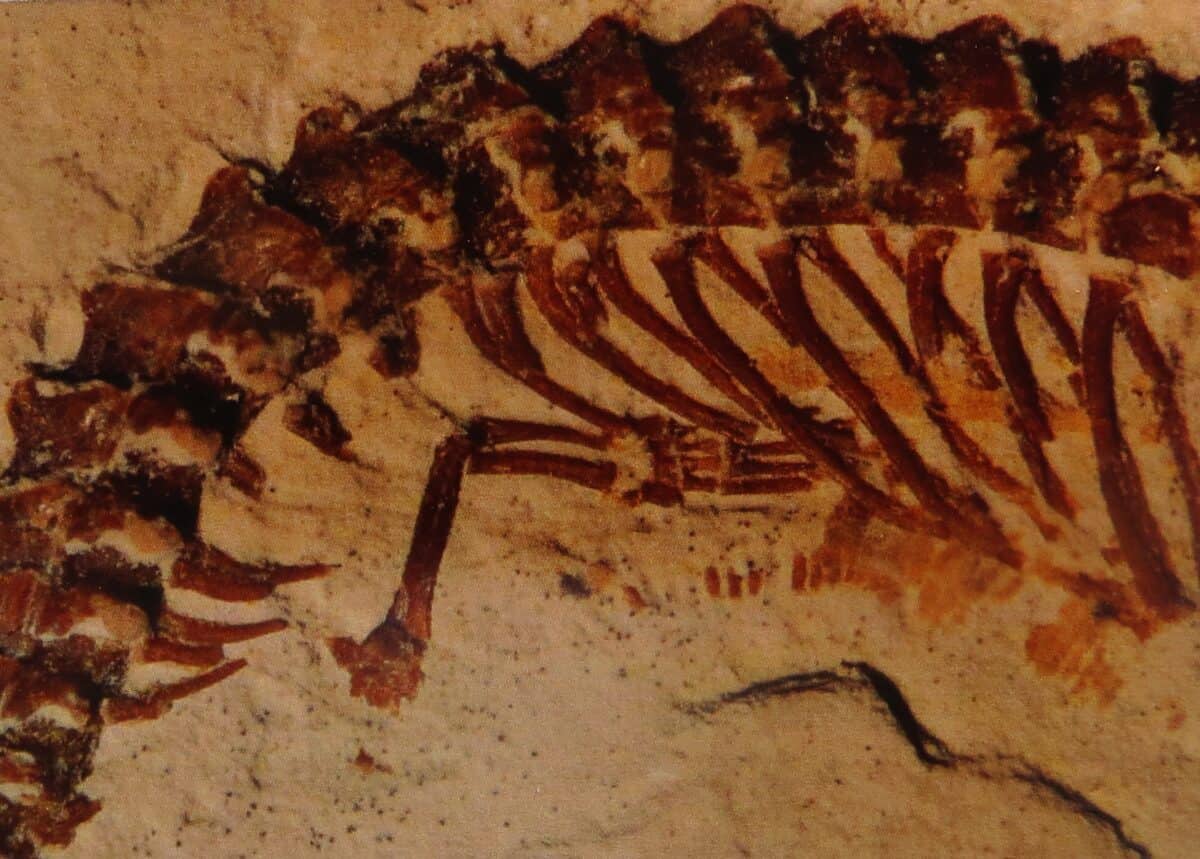
The discovery of Tetrapodophis has prompted renewed interest in the genetic mechanisms underlying limb loss in snake evolution. Modern developmental genetics research has identified several key gene clusters, particularly the Hox genes, that control limb development in vertebrates. Studies of python embryos have shown that the genes necessary for limb development are still present in the snake genome but are not fully activated during development. The gradual limb reduction evidenced by Tetrapodophis and other fossil snakes suggests that this genetic deactivation occurred incrementally over millions of years through regulatory changes rather than through the deletion of limb-forming genes. Scientists have identified specific genetic mechanisms, including changes to enhancer regions that control gene expression, that may have been responsible for the progressive reduction and eventual loss of limbs in snake evolution. This integration of paleontological evidence from transitional fossils like Tetrapodophis with modern genetic research provides a powerful approach for understanding major evolutionary transitions and continues to yield insights into the genetic basis of morphological change over evolutionary time.
Continuing Research and Future Discoveries

The study of Tetrapodophis and its implications for snake evolution remains an active area of research with several promising directions. Ongoing efforts include attempts to secure better access to the original specimen for more detailed analysis, including possible DNA extraction from preserved soft tissues, though this remains challenging for specimens of this age. Additional fieldwork in the Crato Formation and other Early Cretaceous deposits continues, with paleontologists hoping to discover more specimens of Tetrapodophis or related transitional forms that could further illuminate snake origins. Comparative studies with modern snake embryological development are also yielding insights into how the evolutionary changes evidenced by fossils like Tetrapodophis are reflected in developmental processes. Advanced imaging techniques continue to improve, offering the potential for extracting even more information from existing specimens. As these research efforts progress, our understanding of this crucial evolutionary transition will undoubtedly be refined, potentially resolving current controversies about the precise classification of Tetrapodophis and its place in the evolutionary narrative of snakes.
Conclusion: Rewriting the Story of Snake Evolution

The discovery of Tetrapodophis amplectus represents one of the most significant paleontological findings of the 21st century, offering unprecedented insights into the evolutionary transition from limbed lizards to limbless snakes. Despite ongoing scientific debates about its precise classification, this remarkable fossil has forever changed our understanding of snake evolution by providing tangible evidence of a four-limbed phase in snake ancestry. The presence of four small but fully formed limbs, combined with an elongated, snake-like body, creates a perfect snapshot of evolution in action—capturing a crucial moment in the gradual transformation of body plan that eventually produced modern snakes. As research continues and potentially new specimens are discovered, our understanding of this fascinating evolutionary transition will be further refined, demonstrating once again how paleontological discoveries can fundamentally reshape our understanding of life’s history on Earth.
- The Wolves of Yellowstone: A Comeback Story - August 9, 2025
- What Happens During a Wolf Pack Power Struggle - August 9, 2025
- The Most Unexpected Snowfalls in Hot Regions - August 9, 2025

